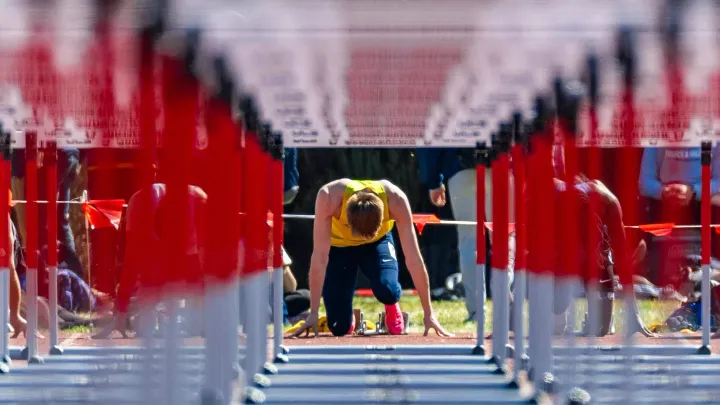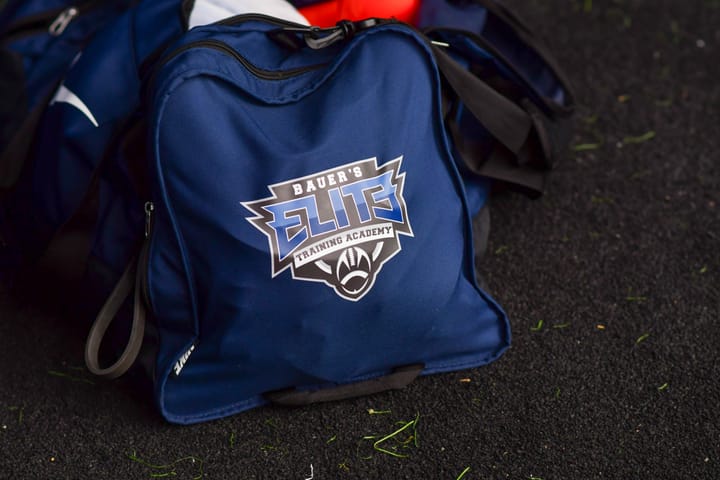Analysis: How would Augustana Football fare in Division I?
NOAH WICKS
ntwicks17@ole.augie.edu
After a surprising announcement in April by Augustana President Stephanie Herseth Sandlin that a discussion would be taking place about whether the university should move up to the Division I playing field, the campus and surrounding Sioux Falls communities erupted into chatter.
Now, in October of the same year, no decision has been made.
If Augustana were to go DI, that decision would certainly have a long-term impact on its football program. The question is, will the pros outweigh the cons?
First of all, if Augustana leaves Division II, it would also have to leave the Northern Sun Intercollegiate Conference and join another league.
In the NCAA’s current college football division system, DI leagues are broken into two subdivisions: the Football Bowl Subdivision (FBS) and the Football Championship Subdivision (FCS).
FBS teams generally come from large, well-known institutions like Iowa State, the University of Nebraska-Lincoln and the University of Notre Dame. FCS teams come from schools that are less prominent like North Dakota State University, South Dakota State University and the University of South Dakota.
If Augustana were to move up it would be put in the FCS bracket, which means it would need to join an FCS league.
This is where things get tricky.
There is talk of Augustana possibly joining the Summit League. There are currently nine members, so if Augustana joined, scheduling games would be easy. Most of the members are from nearby with the exceptions of Oral Roberts University in Tulsa and the University of Denver, which means that travel expenses would be minimal.
The pieces line up almost perfectly—except for the fact that the Summit League doesn’t include football.
So, Augustana would need to join a football-only conference. Currently, there are two options that would fit Augustana’s needs: the Missouri Valley Football Conference (MVFC) and the Pioneer Football League (PFL).
The MVFC would be the most convenient league for Augustana to join, since it is pretty much an I-29 league. Currently USD, SDSU and NDSU are all members and most of the other teams that Augustana would have to face would only be a couple of states away.
The MVFC would also allow Augie to rekindle old rivalries that have been nearly forgotten after the break-up of the North Central Conference in 2006, also allowing Augie to take on SDSU, USD and NDSU again. But they would provide quite a challenge for Augustana.
NDSU has won six FCS championships in the past 10 years and is currently ranked No. 1 in the FCS coaches poll. SDSU will not be an easy opponent either, qualifying for the playoffs 6 of the last 10 years and racking up a total of 69 wins since 2008 countering its 43 losses.
The MVFC is the closest thing to a dream come true that a DI Augustana could hope for. The only problem—it already has 10 teams.
If Augustana were added to the list, the conference would most likely have to find another DI team to balance out the tournament bracket.
A school can only join a conference if that conference extends an invitation. So, if the MVFC can’t find another DI team, it might not extend Augustana an offer.
Now, Augustana also has the option of joining the Pioneer Football League.
The PFL is a non-scholarship football conference that extends to schools nationwide. Though the league currently has 10 members, it will be gaining another in 2021, which means that Augustana’s entry would eventually even the scales.
However, the conference’s no-scholarship model could pose a problem to the university.
Following the NCAA DII partial scholarship model, Augustana is currently allowed to divide the contents of 36 full-ride scholarships among football players on the team. This doesn’t necessarily mean that 36 members of the football team get full-ride scholarships. The total can be divided into partial scholarships and distributed to members of the entire team.
DI FCS schools can follow a similar model, except with allocation for 63 scholarships among up to 85 players. The scholarships can still be divided amongst players, but there is more room to award a higher amount of aid to certain individuals.
However, because the PFL follows a no-scholarship model, Augustana could not award scholarships to individual football players should it join the league. By not offering scholarships, Augustana could lose its appeal to athletes that need financial aid.
The other problem with the PFL is that the members are spread out across the country. The league stretches from Stetson University in Central Florida to San Diego University to Marist College in New York.
If Augie joined the PFL, players would have to travel great distances for games. Augustana is known for its academic excellence, but travel time means more class time will be taken from the student-athletes.
More travel would also mean higher travel costs. Currently, the farthest that the team has to travel is to Bismark, North Dakota, which is 406 miles away. Traveling to these far-off locations would mean higher costs for airfare and gas. In fact, the closest school in this league would be Drake University, located in Des Moines, Iowa, around 283 miles from Sioux Falls.
Augustana does have a state-of-the-art football facility that is capable of handling the shift.
Kirkeby-Over stadium, which opened in 2009, can seat approximately 6,500 people. It has a turf surface and large press and private boxes for watching games.
Should Augie make the DI shift, the adjustment would come with hard knocks. Success would come in small, yearly increments. But, the team could develop into a strong contender in either league if it can attract a group of dedicated players and a management staff to steer it in the right direction.



